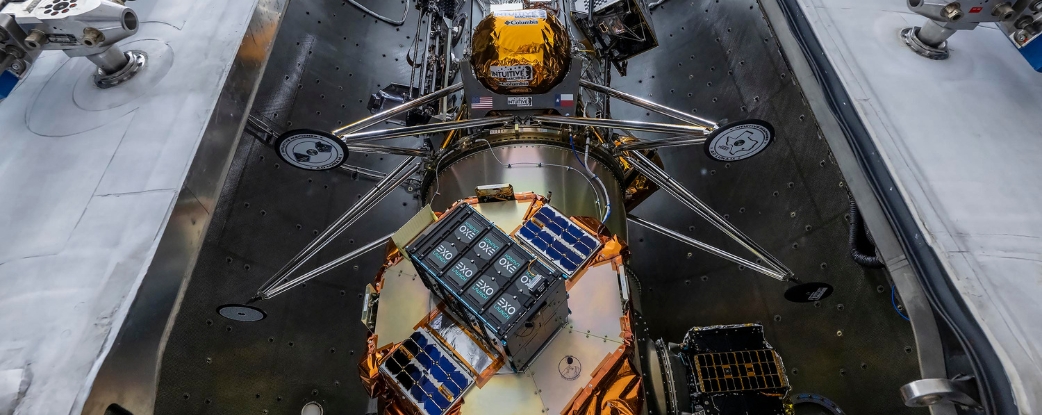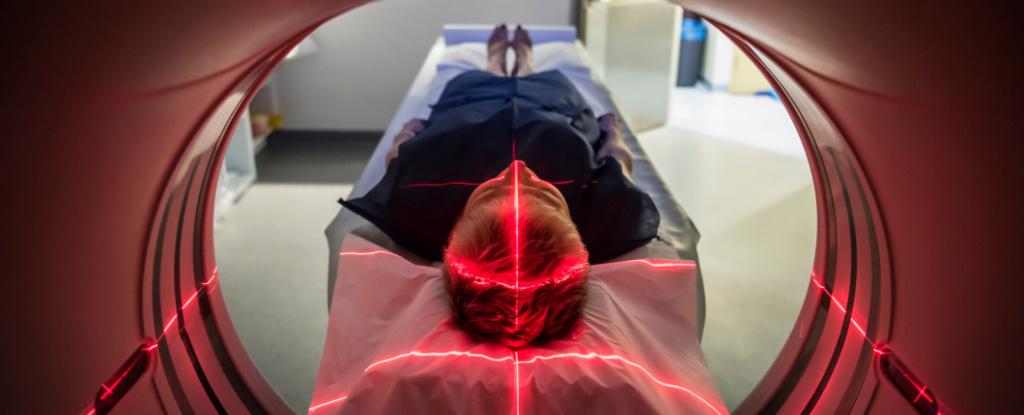Intuitive Machines made history last year as the first private company to put a robot on the Moon, although the triumph was marred by the lander tipping onto its side.
Now, the Houston-based firm is gearing up for a second attempt, determined to achieve a perfect touchdown.
Intuitive Machines’ hexagonal-shaped lander, Athena, is set to launch aboard a SpaceX Falcon 9 rocket at 7:16 pm Wednesday (0016 GMT Thursday) from the Kennedy Space Center in Florida, where the weather forecast is favorable.
frameborder=”0″ allow=”accelerometer; autoplay; clipboard-write; encrypted-media; gyroscope; picture-in-picture; web-share” referrerpolicy=”strict-origin-when-cross-origin” allowfullscreen>
If all goes well, it will touch down around March 6 at the vast Mons Mouton plateau, a site closer to the lunar south pole than any previously targeted.
Athena carries scientific instruments, including a drill to search for ice beneath the surface and a unique hopping drone named Grace after a famous computer scientist, Grace Hopper.
It is designed to traverse the Moon’s rugged inclines, boulders, and craters – a valuable capability to support future crewed missions.
Also aboard is a small rover, which will test a lunar cellular network provided by Nokia Bell Labs by relaying commands, images, and video between the lander, rover, and hopper.
Intuitive Machines CEO Trent Martin spoke excitedly about the hopper, emphasizing that such drones could complement rovers in future missions going “down into extreme environments where you can’t drive.”
Until recently, soft lunar landings were achieved only by a handful of well-funded national space agencies.
Now, the US is working to make private missions routine through the Commercial Lunar Payload Services (CLPS) program, a public-private collaboration aimed at delivering NASA hardware to the surface at a fraction of the cost of traditional missions.
“I’m very excited to see the science that our tech demonstrations deliver as we prepare for humanity’s return to the Moon and the journey to Mars,” NASA’s Nicky Fox, told reporters, referencing the Artemis program, which aims to return astronauts to the lunar surface later this decade.
Today, Athena is headed to the @NASAMoon. 🚀@Int_Machines’ IM-2 mission launches today, Feb. 26, at 7:16pm ET. This mission will be one of the first on-site resource utilization demonstrations on the Moon and will bring @NASA science investigations and technology demonstrations… pic.twitter.com/QzdO7qAziy
— NASA’s Johnson Space Center (@NASA_Johnson) February 26, 2025
Nailing the landing
First however, Intuitive Machines will want to achieve an upright landing – a feat the company fell short of with its first lander, Odysseus, which went to space in February 2024.
It caught a foot on the surface and tipped over, coming to rest at a 30-degree angle – limiting its solar power and preventing it from completing NASA experiments under a $118 million contract.
This time, the price tag is $62.5 million.
Landing on the Moon is challenging due to the absence of an atmosphere, which rules out the use of parachutes.
Instead, spacecraft must rely on precisely controlled thruster burns to slow their descent while navigating treacherous terrain.
Martin said the company had made key improvements – including better cabling for the laser altimeter, an instrument that provides altitude and velocity readings and helps select a safe landing site.
Another issue the IM-1 mission faced was accurately determining its position en route to the Moon. To improve this, Intuitive Machines has enhanced coordination with NASA’s Deep Space Network (DSN) for more precise navigation.
Athena’s arrival at the Moon is set to be preceded on March 2 by another private US lander, Firefly Aerospace’s Blue Ghost, which launched on a more circuitous journey back in January, sharing a ride with Tokyo-based ispace’s Resilience lander.
Also hitching a ride on this rocket will be NASA’s Lunar Trailblazer probe, which will enter orbit after a four-month journey and begin a two-year mission to study the distribution of different forms of water on the Moon.
These missions come at a delicate time for NASA, amid speculation that it may scale back or cancel its astronaut program to the Moon in favor of Mars – a key goal of both President Donald Trump and his close advisor Elon Musk, SpaceX tycoon.





